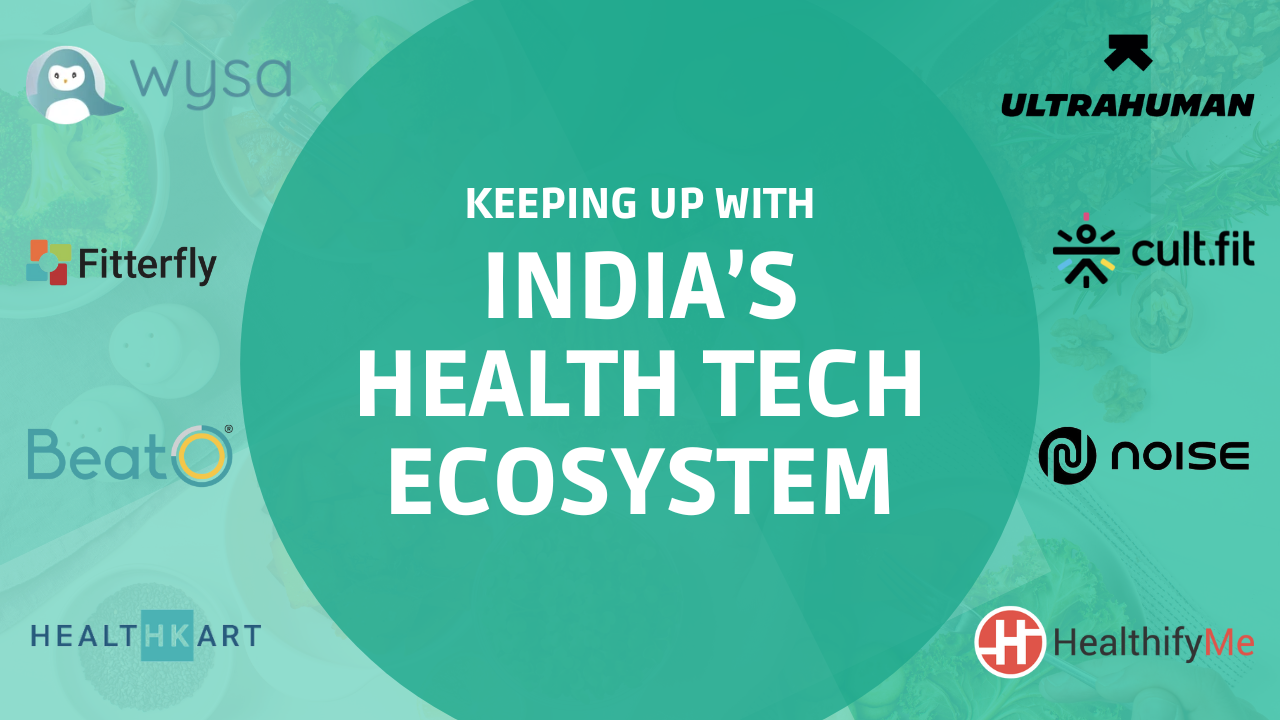Keeping up with India’s Health Tech ecosystem
Once a year, runners flock to Mumbai for a chance to cross the city’s famed Sea Link bridge by foot. The experience is only possible during the Tata Mumbai Marathon, which, with over 55,000 runners this January, is Asia’s biggest 26.2 miler.
The race’s popularity reflects India’s growing interest in running and community-oriented fitness. India has seen explosive growth in competitions; for running alone, India held 176 races in 2013 and nearly 1,600 in 2019. The famed Ironman organization, known for hosting grueling triathlon competitions around the world, came to India in 2019 with a race in Goa and returned for a second edition at the tail end of 2022. Many of the country’s running and cycling communities — which have popped up in every major city — kept up virtual training during the pandemic using apps and other equipment, which connect people with clubs, challenges, virtual races, and more.
Facing a paradigm shift in their everyday habits, 58 million fresh active users contributed to an unprecedented 156% rise in the number of downloads of health and fitness apps in India during the first half of 2020, compared to a 46% rise worldwide. Yes, the digitization of health and fitness — and the associated gadgets and technology — has been a popular global trend, but the circumstances turbocharged the interest in India, shaping it into a major market.
Health tech, a category that broadly encapsulates the companies that leverage technology to improve health or deliver care, has become increasingly popular in the US and other western countries over the past decade. A multitude of B2C offerings, including stationary bikes, recovery tools, and digital products, have become popular among die-hard athletes and casual consumers alike because of their promise to optimize health and wellness with measurable statistics and insights.
We at Times Bridge are looking ahead with these three subsectors in mind:
A. Wearables and Equipment
Perhaps the most popular health tech subsector globally, wearables and equipment include popular hardware like smartwatches and stationary bikes. Global products of all price ranges have proved remarkably successful in India, where the wearables market is expected to surpass that of the United States this year with 117 million units, led by the growing demand for smartwatches. Apple’s best-selling smartwatch has been the Series 7, indicating that a sizable population is willing to pay a premium for the latest global products.
Domestic players including metabolic fitness platform Ultrahuman and smartwatch brand Noise have sprouted up to meet the surging demand. Indoor equipment is especially beneficial in the Indian context, given that shoddy infrastructure, busy roads, extreme weather conditions, and air pollution are a pain-point of outdoor athletic endeavors. Even without the pandemic restrictions that boosted the popularity of wearables and equipment in western markets, India’s extreme urban conditions will continue to propel the demand for such products. Celebrity athletes, including national cricket icon Virat Kohli, have used their star power to further expand the brand recognition of various wearables and equipment and solidify the products within the mainstream Indian consciousness.
B. Nutrition Trackers
The world’s largest obesity epidemic is taking place in India — the country’s own national health survey concluded that one in every four Indians is obese. In response, the Government of India has been pushing a “FIT India” initiative along with a homegrown app that tracks calorie intake, steps, sleep, and other health metrics. Indian startups, which face global competition from the likes of Noom and MyFitnessPal, have also come to the rescue with solutions for those seeking dietary changes.
For example, Bangalore-based HealthifyMe leverages artificial intelligence and machine learning to process data from millions of Indian users and provide personalized nutrition advice and insights. Among the features was calorie counting for Indian foods, a clear advantage over foreign competitors. The Indian diet and palate are distinctive, with more vegetarians than any other country, by percentage and raw number, and with typical consumers unwilling to compromise on taste. Given the importance of finetuned product-market fit, the most successful start-ups in the nutrition realm will be those localized for an Indian lifestyle.
C. Mental Health Products
Mental healthcare in India, as elsewhere, has been oft overlooked. But the global conversation on mental health has opened up drastically in recent years and was pushed into the spotlight because of the pandemic. High-profile Indians, like philanthropist Neerja Birla, are now championing mental health causes. And we’ve witnessed first-hand the rising popularity of platforms like our partner Headspace, which offers meditation and mindfulness exercises as a form of preventive mental healthcare — quite relevant in a country with distinguishable groups, including students and healthcare workers, experiencing high rates of immense stress and burnout.
Additional mental health solutions are coming to the fore. For example, Bangalore-based Wysa, a Hindi-language mental health app, has planned to launch a pilot in early 2023, with services also available via WhatsApp, India’s most popular messaging service. But with increasing social media usage, a results-oriented educational system, and a competitive job market, India could see the demand for mental health offerings continue to rise. Affordable internet and smartphones will ease the adoption of digital platforms.
Conclusion
Over the last two years, investors pumped approximately $100 billion into health tech startups globally, signifying the sector’s potential to reach more consumers with new features and cutting-edge technology. These tools have revolutionized how everyday consumers can harness technology for preventive health care, fitness, and wellness.
India’s own health tech startups have garnered considerable interest, with 288 receiving funding and four achieving unicorn status in the last two years. As we have seen, some of the most popular companies offer Indian replicas of Western products, addressing the demand for products that remain unavailable domestically while often incorporating a localized user experience.
The increased demand for such products will likely continue. India’s health tech sector is growing at a CAGR of 39%, and new health-specific, India-focused VC funds have been raised. Both suggest that the considerable increase in health tech downloads and purchases over the past few years mark a paradigm shift in consumer attitudes toward the ecosystem of wearables, equipment, and apps. The market is projected to grow to $21 billion by 2025, and a wide range of available products will suit a swelling consumer base.
The burgeoning health tech sector presents a compelling opportunity for domestic and global companies seeking to capitalize on the growing demand from Indian consumers. And, as has been the case within our portfolio, we expect the most successful players to be those willing to go the extra mile with world-class offerings and an India-specific playbook.
By Samantha Chai




 Back
Back






